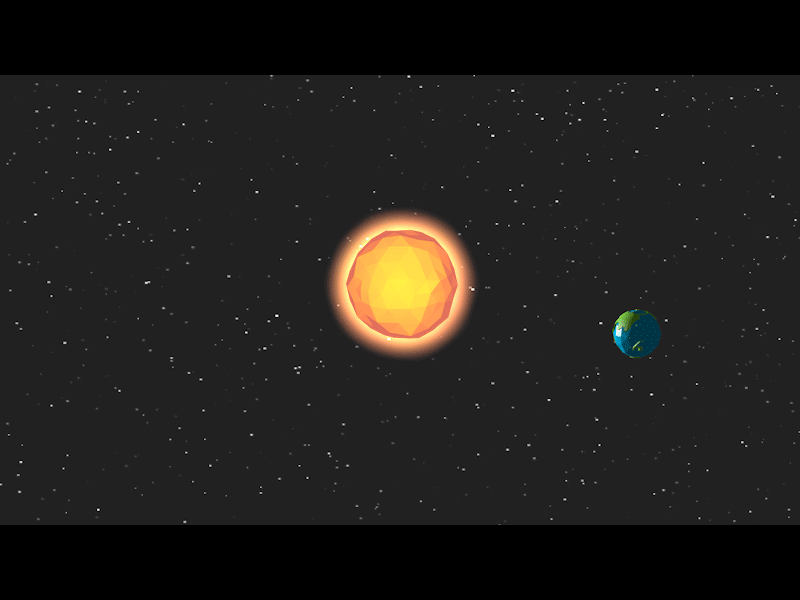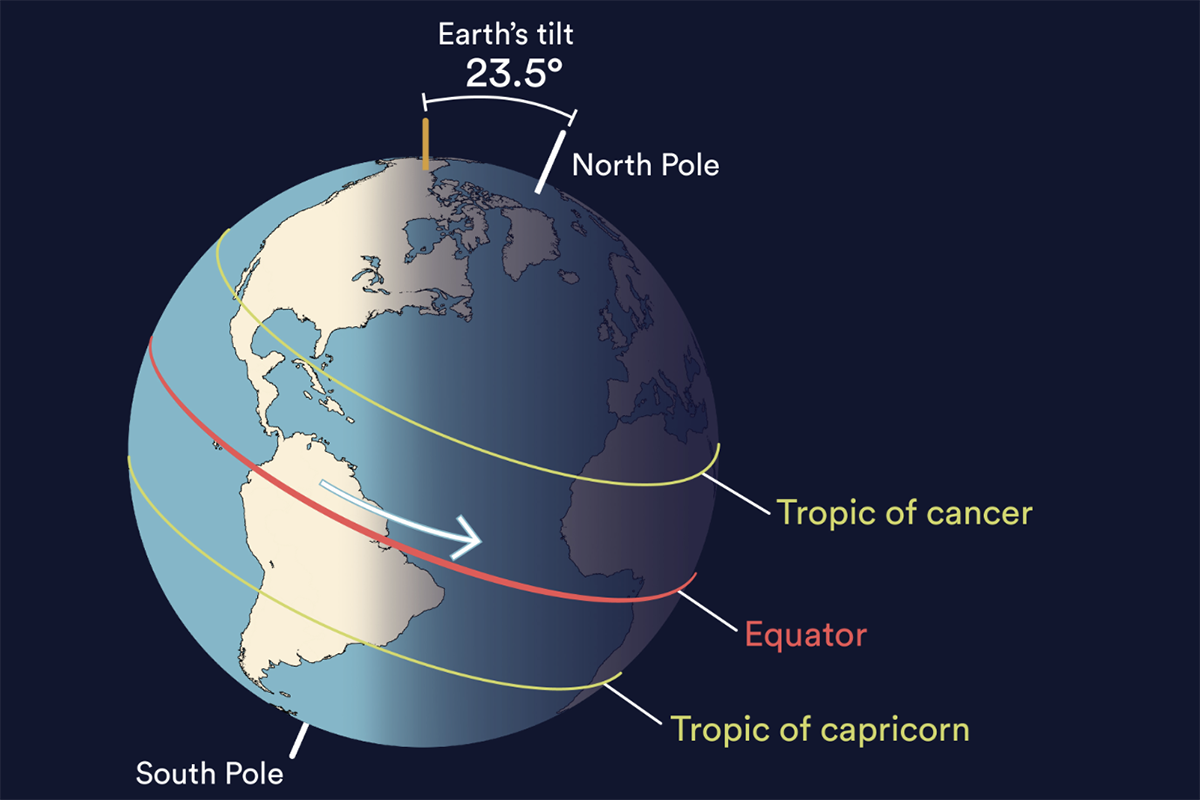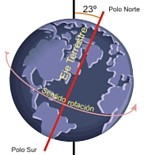Below is a list of the most important basic concepts, in relation to the main movements of the Earth and some phenomena associated with them.
Rotation and translation
Is called Rotation to the movement that the Earth makes rotating on itself, that is, around its own axis; The time it takes to make one revolution around its axis is 23h, 56m and 4s (sidereal day). The Earth's axis is inclined at 23º44' with respect to the ecliptic, and this inclination is what produces the seasons of the year, as well as the long periods of light and darkness at the poles.

Is called Translation to the movement that the Earth makes around the Sun, due to its gravitational influence; The time it takes to go around it is 365 d, 5 h and 49 m -365.2522 d- (tropical year). The Earth describes an elliptical path of about 930 million km, its average distance to the Sun being about 150,000,000 km; From this it follows that the Earth moves at about 106,000 km/h (29.5 km/s).

Note, from the images shown below, that the inclination of the Earth's axis at 23° has a direct impact on what happens during its movement around the Sun, since at different times of the year how much solar radiation reaches it varies. each terrestrial hemisphere, which explains the occurrence of the seasons of the year.




